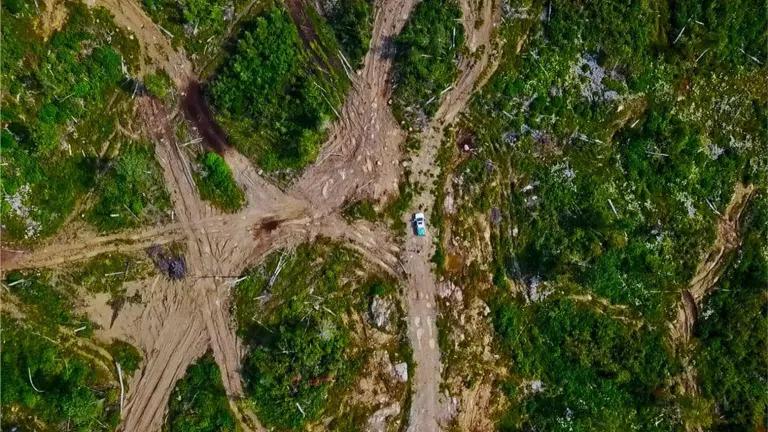While the Keystone XL tar sands pipeline has stimulated a major political debate, the financial sector is now increasingly voicing concern about the growing financial risks associated with the environmental and human rights impacts of tar sands development in Canada. Major investors with $2 trillion in managed assets sent a strong message this week that the risks of Canada’s tar sands on the environment are unacceptable. A new report issued by CERES representing 49 investors including holdings in tar sands companies outline the real risks of tar sands development on climate, water, lands, and human rights. The controversy over tar sands pipelines like Keystone XL and Northern Gateway was viewed by the investors as a risk but also new climate policies in California and Europe discouraging dirty fuels. Notably, the failure of the Canadian government – both at the provincial and federal level – to actively reduce these environmental and social risks was identified as a major contributing factor by the investors. Despite claims by the Canadian government and industry, current laws and policies in Canada are weak and do little to lessen the impact of tar sands development on the Canadian Boreal.
The report by CERES, Investor Expectations for Improving Environmental and Social Performance in Canadian Oil Sands Development, delivers a clear message that the financial sector isn’t convinced by the current rhetoric from the tar sands industry claiming effective actions are being taken to reduce the impacts of tar sands development.
"We recognize the economic significance of the resource, but are concerned that the current approach to development, particularly the management of the environmental and social impacts, threatens the long-term viability of the oil sands as an investment." – CERES report
The report outlines four areas where tar sands development operations have a substantial impact and where current policies do not appear to be addressing the risk.
- Greenhouse gas emissions: The investors point to a troubling trend where greenhouse gas intensity is increasing creating a significant risk particularly in a future that is likely to include carbon pricing. Claims that intensity is decreasing are, in fact, not true. The intensity of greenhouse gas emissions from tar sands is growing because of the significant increase in drilling (or in situ) operations which emit twice the amount of climate emissions than mining operations. The investors also pointed out that the Alberta government climate plan, while setting greenhouse gas intensity tar and putting a price on emissions, isn’t effective and will not come close to achieving its climate targets.
- Toxic water: The report pointed to the growing presence of massive toxic lakes in Alberta, a byproduct of tar sands operations. These toxic lakes may be one of the greatest liabilities facing tar sands development. Tailings lakes currently occupy 176 square kilometers, greater than the size of Washington DC, and are expected to expand nearly 50% in size by 2020. While companies have been running non-stop advertisements in Canada promoting their environmental record, their proposed long-term solution to toxic tailings is for mining companies to dump the toxic waste into old mine pits and cap them with fresh water from the Athabasca River leaving a legacy of risk and toxic waste for possibly hundreds of years.
- Responsibility to Native Communities: Lawsuits being brought by Canada’s First Nations, Métis, and Inuit communities, many of whom are heavily impacted by tar sands development, pose particularly significant risks to tar sands development. These legal challenges such as one being brought by the Beaver Lake Cree Nation and the Athabasca Chipewyan First Nations presents major risks to tar sands development. The legal rights of First Nations in Canada are constitutionally protected and have the potential to limit tar sands development.
- Land Disturbance and Financial Security: The report also pointed to unaccounted for liabilities for tar sands mining operations for reclamation costs after mines shut down. Current liabilities for mines are upwards of $15 billion in 2008 and could grow to $33 billion by 2025. The full costs are not accounted for on corporate balance sheets and do not reflect the true costs of reclamation. The Pembina Institute reports there is likely a greater financial risk for tar sands investors because companies are not disclosing what is likely to be higher costs for reclamation than what they are reporting.
The report from these investors illustrates a key point: while industry has been busy self-promoting its environmental record, the true story is that the impacts of tar sands development are growing and getting worse. And they point out there is nothing in the way of regulations or policy stopping that trend. Operating projects in the tar sands currently produce over 2 million barrels a day. But there are plans to grow the tar sands industry to produce as much as 8 million barrels per day. This growth will have a significant impact on the Canadian landscape and without a strong regulatory framework to significantly limit or eliminate impacts. NRDC has identified the tar sands as a priority given the impact on water, wildlife, and local communities living in the great Canadian Boreal. But it is also a concern for the financial sector who is wondering if the tar sands are too risky to be an area of continued investment.



